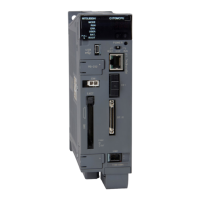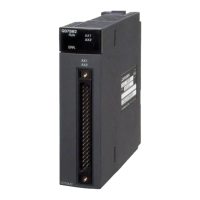5
REDUNDANT SYSTEM FUNCTIONS
5.5 Tracking Function
5.5.1 Tracking Function Overview
5 - 74
1
OVERVIEW
2
SYSTEM
CONFIGURATION
3
TRACKING CABLE
4
PROCEDURE FOR
STARTING UP A
REDUNDANT SYSTEM
5
REDUNDANT SYSTEM
FUNCTIONS
6
REDUNDANT SYSTEM
NETWORKS
7
PROGRAMMING
CAUTIONS
8
TROUBLESHOOTING
(2) Tracking Data
There are 2 types of tracking data: tracking data based on the range set by the user
and tracking data regardless of the settings, i.e., automatic tracking data.
(a) Tracking Data Range Setting by User
The tracking data range and tracking timing can be set by the user.
As the tracking data range has been set by default in the redundant CPU, tracking
will be executed even without the user making the tracking settings.
(b) Automatic Tracking Data
The data will be automatically tracked regardless of the tracking settings.
The automatic tracking data range cannot be changed by the user.
Refer to Section 5.5.3 for details on the tracking data settings.
(3) Changing Tracking Data Settings
The tracking data range settings can be changed in the following cases:
• To shorten the tracking time
• To add to the tracking data (file register, etc.)
• To change the tracking timing in a program
• To track signal flow memory
Change the tracking data setting at the tracking settings in the redundant parameter
settings of GX Developer.
Refer to Section 5.5.4 for details on changing the tracking data settings.
Remark
When changing the tracking data settings at the tracking settings in the redundant
parameter settings, the data can be divided into blocks (tracking block).
Each block can be set to be tracked or not for each scan with the special relay for
data tracking execution (Data tracking block specification trigger: SM1520 to
SM1583).
Refer to Section 5.5.5, for details on tracking blocks and tracking triggers.

